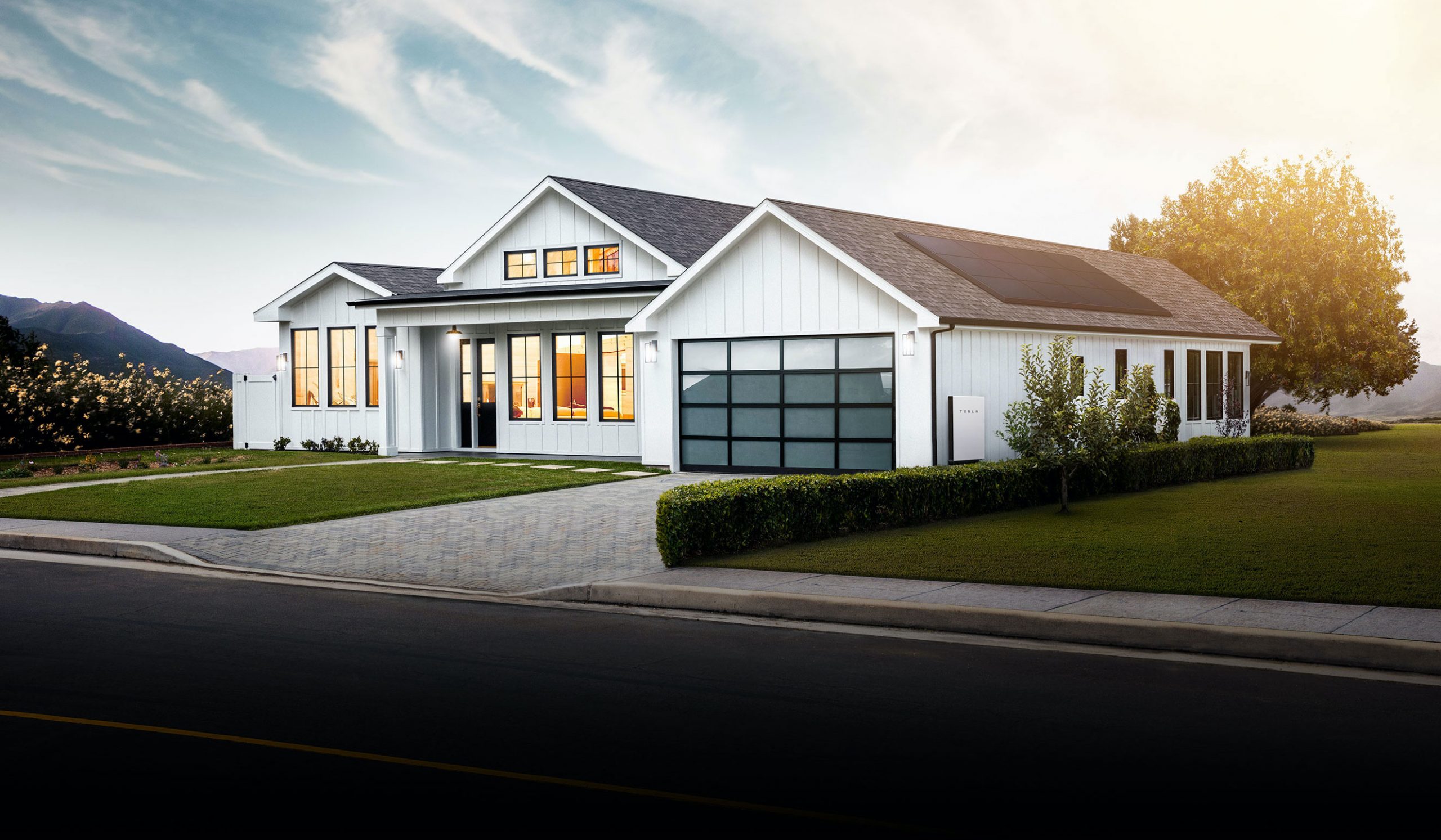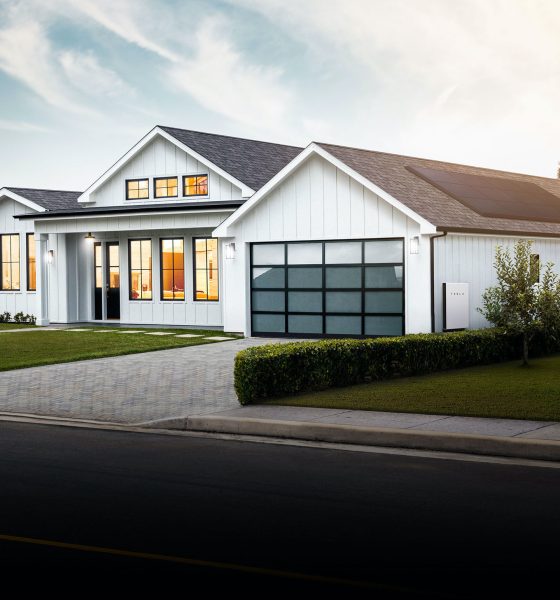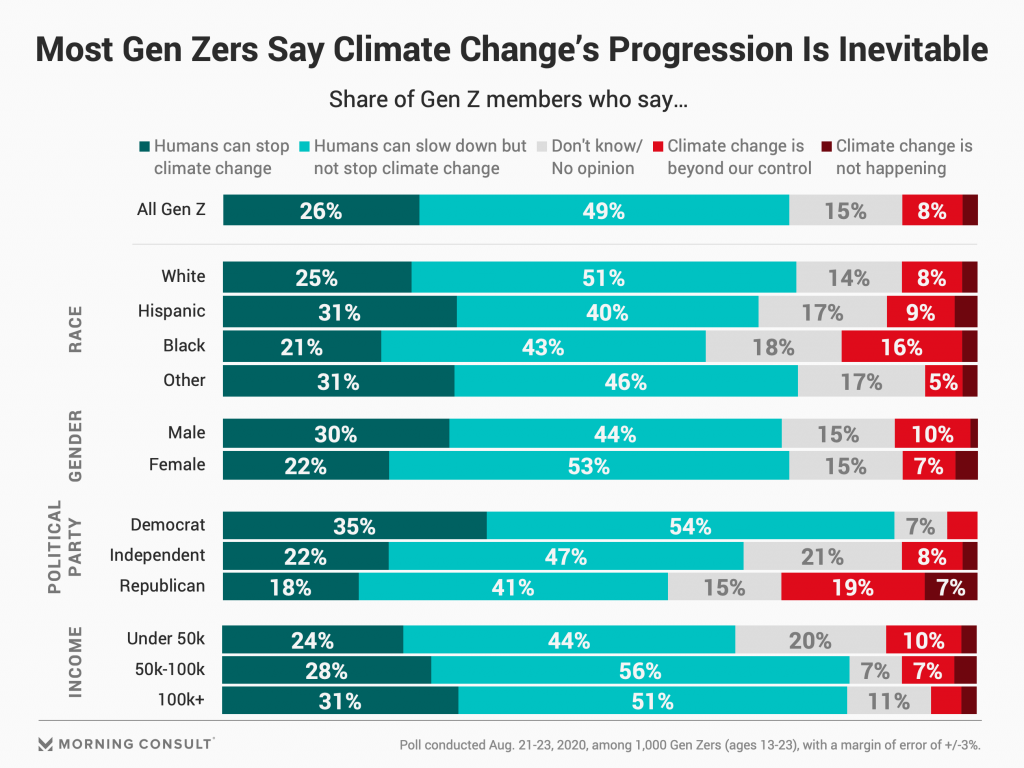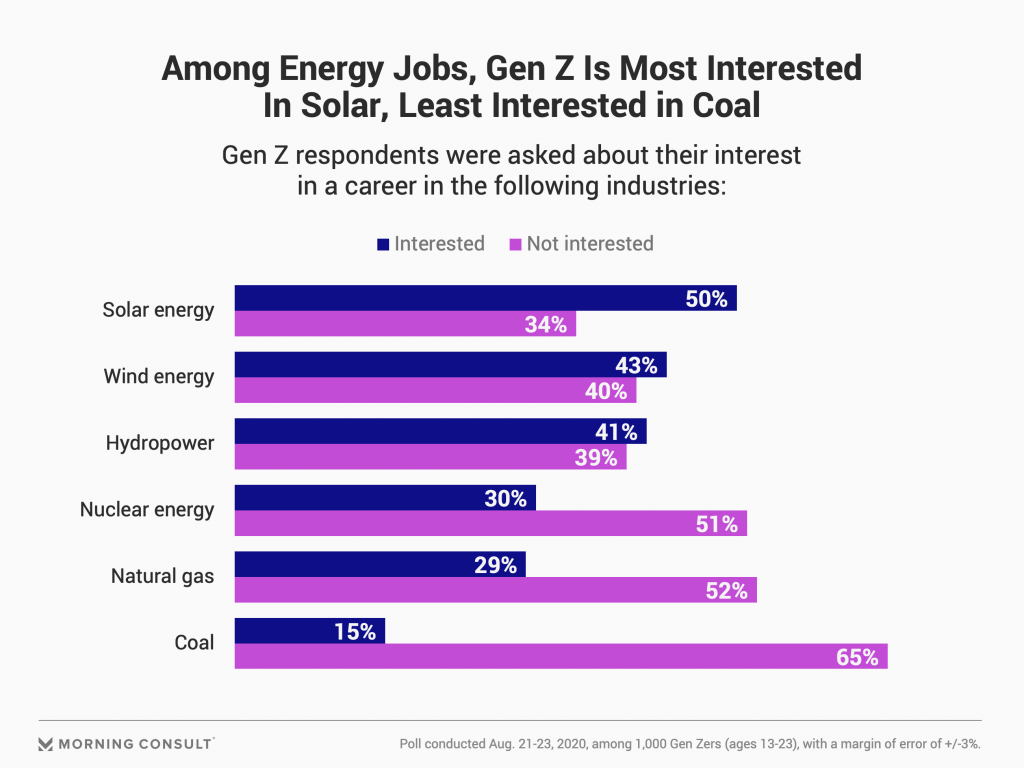

News
Tesla Energy’s true potential shines as study shows Gen Z prefers renewables, not coal
During the second quarter earnings call, Elon Musk highlighted that the potential of Tesla Energy exceeds that of the company’s automotive business simply because the utility sector is much larger than the car industry. Fortunately for Tesla, it appears that the upcoming ramp of its energy business is coming just at the right time, as a recent study has determined that members of Gen Z are far more interested in careers relating to renewable energy.
Morning Consult, a US-based data intelligence firm, recently conducted a climate change study on members of Generation Z aged between 13 and 23. The study was conducted on August 21-23 and it involved about 1,000 participants, with a margin of error of 3 percentage points. In a post about its survey, the data intelligence firm noted that overall, the study revealed that Gen Z accepts climate change as a fact, and a significant number of them are willing to do something about it.
As could be seen in the graphic below, 26% of the respondents in the study believe that humans have the capability to stop climate change. A larger number, 49%, believe that while climate change could not really be stopped, it could be slowed down. Encouragingly, only 2% of the study’s respondents stated that they do not believe climate change is happening, and only 8% stated that climate change is beyond humans’ control.

What is particularly notable in the study’s results was the fact that 73% of the survey’s respondents stated that they are “very” or “somewhat” concerned about the impact of climate change on the environment. The data intelligence firm noted that these values would likely have an effect on policies in the near future. “While many of the poll’s respondents are not yet able to vote, as the generation that has given the world activists such as Greta Thunberg and Xiye Bastida comes of age, its values will be of increasing relevance to policymakers,” the firm noted.
Amidst the data gathered by the intelligence firm, one particular point stood out. Gen Z-ers, most of whom have lived through a time when the effects of climate change have been more prominent, are focused on careers relating to sustainability. When asked about their career prospects, the vast majority of the study’s respondents stated that they are interested in sectors that contribute to the fight against climate change, like solar and wind. Sectors whose emissions harm the environment such as coal, on the other hand, hold very little appeal.

Based on the results of Morning Consult’s study, 50% of the respondents noted that they were interested in pursuing a career in the solar industry. Careers in wind and hydropower are a close second and third, with 43% and 41%, respectively. Interestingly enough, the coal industry, a key driver of the industrial age, only holds appeal to 15% of the study’s respondents, making it the least popular career option for Gen Z members. Alternatives to renewables like solar and wind, such as nuclear power, also seem to hold little appeal for the survey’s respondents.
“Fifteen percent of Gen Z-ers, meanwhile, expressed interest in a career in coal, with 65% saying they were not interested. The natural gas sector — which proponents have long touted as facilitating the economy’s transition to more renewable energy — was also unpopular, with 29% interested and 52% not interested. This is consistent with the industry’s own polling in 2017, which has prompted concern from energy executives about how to recruit new talent in the coming decades. And while nuclear energy has similarly been championed as playing a crucial role in the transition, the sector proved statistically as unpopular as natural gas,” the intelligence firm noted.
With this shift in mind, companies like Tesla are perfectly positioned as the preferred places of work for the next generation. As Gen Z steps away from fossil fuel-based jobs, the opportunities for businesses such as Tesla Energy become larger. Companies that actively address the effects of climate change, after all, are far better alternatives to workplaces whose practices actively destroy the planet. Perhaps this is already starting in the automotive sector, as companies like Tesla are becoming increasingly popular among engineering graduates. Beyond the appeal of working for a rockstar CEO like Elon Musk, Tesla’s disruptive approach and its open, ambitious mission could very well be considered attractive by prospective employees.

News
Tesla FSD fleet is nearing 7 billion total miles, including 2.5 billion city miles
As can be seen on Tesla’s official FSD webpage, vehicles equipped with the system have now navigated over 6.99 billion miles.

Tesla’s Full Self-Driving (Supervised) fleet is closing in on almost 7 billion total miles driven, as per data posted by the company on its official FSD webpage.
These figures hint at the massive scale of data fueling Tesla’s rapid FSD improvements, which have been quite notable as of late.
FSD mileage milestones
As can be seen on Tesla’s official FSD webpage, vehicles equipped with the system have now navigated over 6.99 billion miles. Tesla owner and avid FSD tester Whole Mars Catalog also shared a screenshot indicating that from the nearly 7 billion miles traveled by the FSD fleet, more than 2.5 billion miles were driven inside cities.
City miles are particularly valuable for complex urban scenarios like unprotected turns, pedestrian interactions, and traffic lights. This is also the difference-maker for FSD, as only complex solutions, such as Waymo’s self-driving taxis, operate similarly on inner-city streets. And even then, incidents such as the San Francisco blackouts have proven challenging for sensor-rich vehicles like Waymos.
Tesla’s data edge
Tesla has a number of advantages in the autonomous vehicle sector, one of which is the size of its fleet and the number of vehicles training FSD on real-world roads. Tesla’s nearly 7 billion FSD miles then allow the company to roll out updates that make its vehicles behave like they are being driven by experienced drivers, even if they are operating on their own.
So notable are Tesla’s improvements to FSD that NVIDIA Director of Robotics Jim Fan, after experiencing FSD v14, noted that the system is the first AI that passes what he described as a “Physical Turing Test.”
“Despite knowing exactly how robot learning works, I still find it magical watching the steering wheel turn by itself. First it feels surreal, next it becomes routine. Then, like the smartphone, taking it away actively hurts. This is how humanity gets rewired and glued to god-like technologies,” Fan wrote in a post on X.
News
Tesla starts showing how FSD will change lives in Europe
Local officials tested the system on narrow country roads and were impressed by FSD’s smooth, human-like driving, with some calling the service a game-changer for everyday life in areas that are far from urban centers.

Tesla has launched Europe’s first public shuttle service using Full Self-Driving (Supervised) in the rural Eifelkreis Bitburg-Prüm region of Germany, demonstrating how the technology can restore independence and mobility for people who struggle with limited transport options.
Local officials tested the system on narrow country roads and were impressed by FSD’s smooth, human-like driving, with some calling the service a game-changer for everyday life in areas that are far from urban centers.
Officials see real impact on rural residents
Arzfeld Mayor Johannes Kuhl and District Administrator Andreas Kruppert personally tested the Tesla shuttle service. This allowed them to see just how well FSD navigated winding lanes and rural roads confidently. Kruppert said, “Autonomous driving sounds like science fiction to many, but we simply see here that it works totally well in rural regions too.” Kuhl, for his part, also noted that FSD “feels like a very experienced driver.”
The pilot complements the area’s “Citizen Bus” program, which provides on-demand rides for elderly residents who can no longer drive themselves. Tesla Europe shared a video of a demonstration of the service, highlighting how FSD gives people their freedom back, even in places where public transport is not as prevalent.
What the Ministry for Economic Affairs and Transport says
Rhineland-Palatinate’s Minister Daniela Schmitt supported the project, praising the collaboration that made this “first of its kind in Europe” possible. As per the ministry, the rural rollout for the service shows FSD’s potential beyond major cities, and it delivers tangible benefits like grocery runs, doctor visits, and social connections for isolated residents.
“Reliable and flexible mobility is especially vital in rural areas. With the launch of a shuttle service using self-driving vehicles (FSD supervised) by Tesla in the Eifelkreis Bitburg-Prüm, an innovative pilot project is now getting underway that complements local community bus services. It is the first project of its kind in Europe.
“The result is a real gain for rural mobility: greater accessibility, more flexibility and tangible benefits for everyday life. A strong signal for innovation, cooperation and future-oriented mobility beyond urban centers,” the ministry wrote in a LinkedIn post.
News
Tesla China quietly posts Robotaxi-related job listing
Tesla China is currently seeking a Low Voltage Electrical Engineer to work on circuit board design for the company’s autonomous vehicles.

Tesla has posted a new job listing in Shanghai explicitly tied to its Robotaxi program, fueling speculation that the company is preparing to launch its dedicated autonomous ride-hailing service in China.
As noted in the listing, Tesla China is currently seeking a Low Voltage Electrical Engineer to work on circuit board design for the company’s autonomous vehicles.
Robotaxi-specific role
The listing, which was shared on social media platform X by industry watcher @tslaming, suggested that Tesla China is looking to fill the role urgently. The job listing itself specifically mentions that the person hired for the role will be working on the Low Voltage Hardware team, which would design the circuit boards that would serve as the nervous system of the Robotaxi.
Key tasks for the role, as indicated in the job listing, include collaboration with PCB layout, firmware, mechanical, program management, and validation teams, among other responsibilities. The role is based in Shanghai.
China Robotaxi launch
China represents a massive potential market for robotaxis, with its dense urban centers and supportive policies in select cities. Tesla has limited permission to roll out FSD in the country, though despite this, its vehicles have been hailed as among the best in the market when it comes to autonomous features. So far, at least, it appears that China supports Tesla’s FSD and Robotaxi rollout.
This was hinted at in November, when Tesla brought the Cybercab to the 8th China International Import Expo (CIIE) in Shanghai, marking the first time that the autonomous two-seater was brought to the Asia-Pacific region. The vehicle, despite not having a release date in China, received a significant amount of interest among the event’s attendees.








